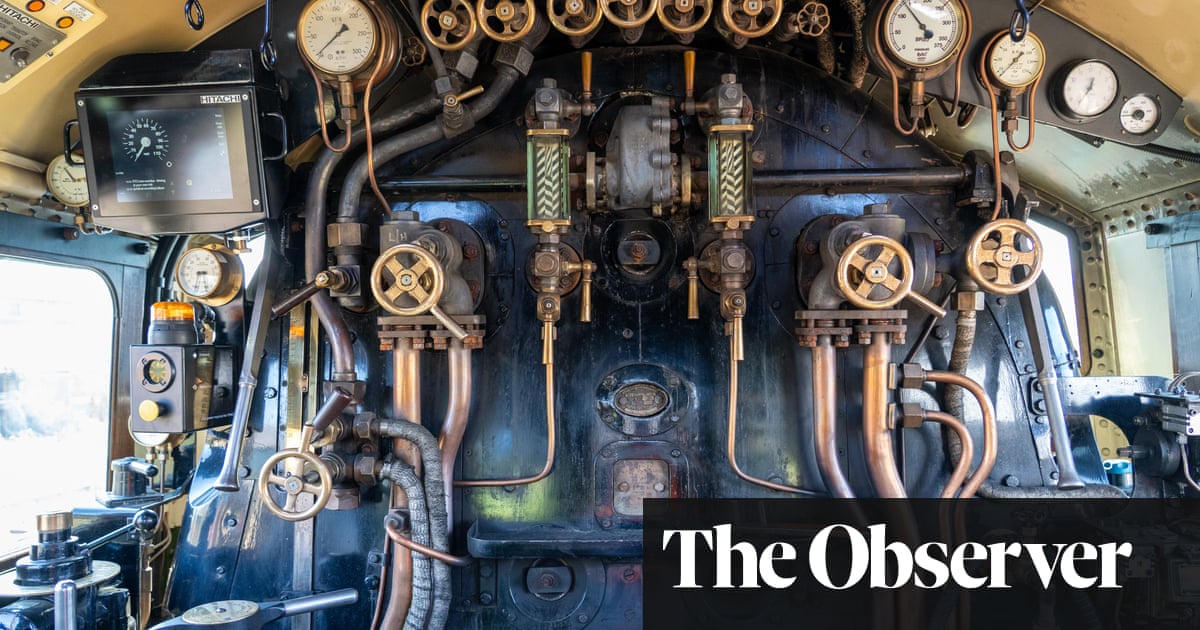About 500 steam trains run across the UK each year, from Penzance in the south to Inverness in the north,transporting tens of thousands of passengers to a bygone age, bringing joy to the faces of enthusiasts and bemusing commuters.
But the future of main line steam operations could be under threat unless the traditional fire-breathing machines can be fitted with pioneering modern technology.
The UK’s railways are undergoing a major change to their signalling systems in the coming years.Network Railis planning to remove traditional lineside colour light signals in favour of in-cab signalling systems along key routes. No steam locomotive in the world had ever been run with in-cab digital signalling – until now.
On a Monday night earlier this month, the new technology was trialled for the first time as part of a “pathfinder” project aimed at securing the future of steam locomotives in the UK.
The “A1” No.60163 Tornado –Britain’s first steam locomotive to be built in 50 yearsand which has appeared in thePaddington 2movie and onTop Gear– has been fitted with European Train Control System (ETCS) technology as part of a Network Rail-led initiative which was launched in 2021. Fitting the new technology cost about £9m.
ETCS is to be rolled out across the country in the coming years and some trains will run in digital-only mode from the end of this year.
It is already widely used in Europe and is seen as the industry standard signalling system for high-speed lines. Since 2011, the Cambrian Coast Line has been operated exclusively using the system as part of a different pilot programme.
The Tornado ran west of Shrewsbury to Newtown and Welshpool overnight to trial the technology for the first time.
“It is existential to the sector if steam cannot run with ETCS … the team have done a brilliant job of getting us to this point,” a Network Rail spokesperson involved in the project told theObserver. “The pathfinder [project] is all about saying ‘this is going to be really hard, is it technically viable?’ Nobody has ever done it with a heritage vehicle.”
Since the privatisation of the railways, steam trains have been free to roam the national network subject to there being “white space” in the timetables around service trains.
“We had quite a few challenges fitting the systems,” Rob Morland, electrical engineer at The A1 Steam Locomotive Trust, Tornado’s owning group, told theObserver. “This is a very harsh environment: we’ve got heat, coal, coal dust, shocks and vibrations and they all stress the systems.”
A second steam-powered turbo generator, an axle-driven alternator and a dedicated battery bank had to be installed in order to power the equipment: “The cab was stripped back to bare metal because of the sheer number of new conduits, boxes and equipment and that was the only practical way to do it,” Morland added.
Amy Clouston, principal human factors specialist at engineering consultancy AtkinsRéalis, which designed the fitment of the systems, said: “We had to test whether or not you can even use a touchscreen while you’re hurtling along at up to 75mph. We’ve had to think about vibrations, lighting, noise, coal dust, water and steam and grubby fingers.”
Clouston said her team also had to factor in the placement of the screens to avoid being hit by a fireman swinging a shovel around, while still being in a position where the driver can still see the safety-critical information displayed.
“Drivers have varied positions: some drivers hang out of the cab, others stand. It isn’t a ‘I’m sat at a desk’ design of a modern diesel or electric locomotive,” she said.
Keeping the computers powering the systems cool also proved to be a headache: “The design team had the challenge of sealing them [against] coal dust and heat. Electronics in a sealed environment that’s already hot does not bode well [for the longevity],” she added.
“Tornado’s retrofit with our ETCS is a world-first project that has tested our technology in one of the most complex and harsh operating environments, proving heritage and digital systems can coexist without compromise,” Tank Porteous, main line signalling programme director at Hitachi Rail UK, a partner in the project, said.
Tornado is so far the only steam locomotive to have been fitted with the system. Last year Network Rail issued a £40m tender document for companies to bid to fit 24 main line steam and heritage diesel locomotives.
“The price of future fitments will be significantly cheaper, there’s no doubt about that, but we don’t know yet exactly what that might be,” the NR spokesperson said.
“We need to work out how commercially viable it is going to be. This is going to form part of where we go in the future.”
The spokesperson told theObserverthe team have “learned more in the extremes with Tornado than we will do anywhere elsewhere” and the results will influence the design of equipment that will be fitted.
AtkinsRéalis’s Clouston said the project was vital to the future of the main line steam sector: “Steam is part of the nation’s engineering heritage so it would be such a shame if it were to only be contained to private, heritage railways. Having steam locomotives out there on the main line is a wonderful thing to see.”
